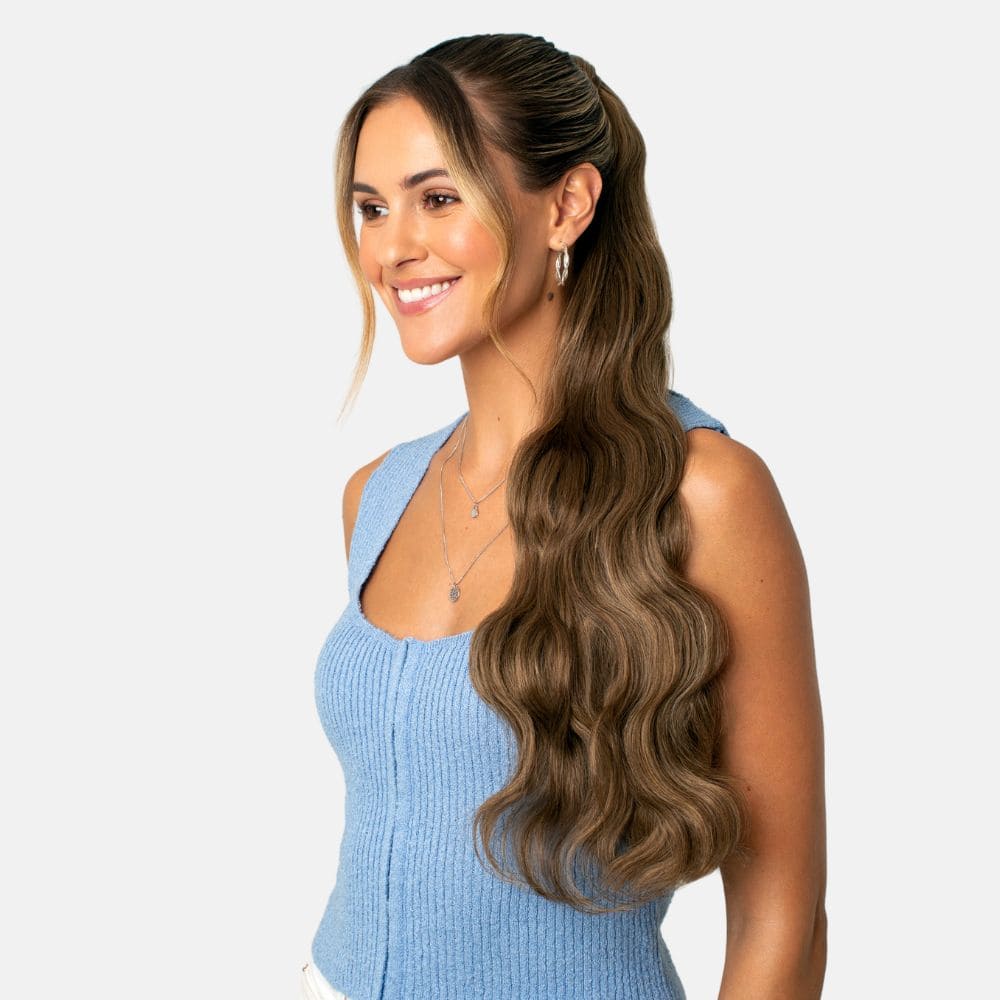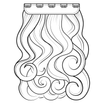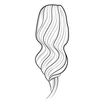Within this article we discuss the types of human hair extensions that are suitable for dying, we also evaluate the negative effects of dyeing human hair extensions and choices you can make to avoid the need to dye your human hair extensions.
Hair extensions are a game changer for women who crave longer, thicker locks but lack the natural ability to grow their hair past a certain point, or have naturally thin hair. Human hair extensions allow individuals to effortlessly transform their hairstyles and experiment with different lengths, colours, and styles.

Dyeing human hair extensions has emerged as a popular trend among women seeking to add a personalised touch to their extensions. This article will delve into the reasons behind the growing popularity of dyeing hair extensions, exploring the various benefits and aesthetic possibilities it offers, and we will explore the different types of hair extensions that can be dyed, as well as the essential considerations and techniques involved in achieving the desired colour and flawless results. Whether you are an avid hair enthusiast or simply curious about this trend, this discussion will provide valuable insights into the ever-evolving world of hair extensions and the possibility of dyeing them.
What type of human hair extensions do I have?
Before contemplating how you will dye your human hair extensions you must first discover if your human hair extensions can be dyed to your desired colour. To do this you must understand the different types of human hair and the limitations you may face in terms of the colour outcome you are hoping to achieve.
Types of Human Hair Extensions
Human hair is available in many different grades, and price points. Similarly, hair colour can also be purchased in varying qualities, meaning the results of dying human hair can be dramatically different. See our expert advice on these hair types and the suitability for dyeing;

Mixed Fibre Hair Extensions
Mixed fibre which is, as the name suggests, mixed quality, it could even be mixed with synthetic fibre, this type of hair is not suitable for dyeing. The mix of different quality fibres means the hair will absorb hair colour differently and will result in a patchy, inconsistent colour, which is not a good look. This will ruin your hair extensions and will be very difficult to rectify.
100% Human Hair Extensions
100% Human hair is a great choice for anybody looking to obtain a good quality clip-in set that performs well with heated styling tools and is a great investment product for synthetic hair users to transition into 100% human hair.
When purchased as a clip-in set, wearers can maintain the quality of the product for longer as it is removed under harsh conditions such as showering, sleeping and workouts. These hair types are usually available in a fantastic collection of multi-tonal shades meaning they have a mix of high and low-light designs to mimic popular hair trends and natural multi-tonal shades.

Attempting to dye these types of hair extensions could prove tricky, as the hair has undergone a professional dyeing process to create beautiful bespoke colour designs, changing the colour from the intended shade could be difficult and is not ideal.
Technically 100% human hair can be dyed but if you choose to do this we would recommend simple dyeing processes, for example changing a dark brown to a black or putting a toner on a light blonde shade to make it appear more ashy. We recommend using salon-quality products to do this such as Wella, this is a professional brand but they have an at-home product; named Wella Colour Refresh that is available to retail consumers. We strongly advise against using low-quality toners available from the supermarket, these products have higher levels of peroxide which are likely to damage the hair and have patchy results. Avoid dyeing a blonde and brunette mix or attempting to make a shade lighter as this is more difficult and you may face complications.
You should also consider the effect a dye could have on the quality of the hair, as the human hair extensions have undergone a professional dyeing process, further processing could affect the quality of the human hair, possibly decreasing the lifespan and appearance. It's better to request a seamless colour match to blend with your current hair colour without the need for dyeing.
Remy Hair Extensions
Remy is the term used to describe hair where the cuticles of the hair are aligned, in the natural direction that they have grown from the root. This makes the hair less prone to tangling and breakage as the cuticles are flowing in the same direction which avoids friction that leads to knotting and matting.

This hair type is often used for semi-permanent applications such as tape-in, nano-beads, keratin bonds and weaves. As Remy hair is often used for semi-permanent applications, it is subjected to rigorous washing, frequent brushing, styling, and exposure to harsh conditions and active lifestyles, therefore it requires occasional dyeing. The colour of extensions can fade or become discoloured more rapidly when permanently applied, making dyeing an essential upkeep practice. However, this should only be done by professionals as there are still limitations that only an experienced hairdresser will understand when dyeing hair extensions.
Top Tip: Beware of misleading labels! Not all hair is marked as Remy truly is. The absence of regulations allows companies to mislabel their products as Remy, even when they aren't. Exercise caution: if the price seems too good to be true for genuine Remy hair, it probably is. Opt for trusted hair extension providers with positive reviews to ensure the authenticity of the hair quality. Steer clear of very cheap, unbranded alternatives to safeguard the quality of your purchase.
Virgin Hair Extensions
Virgin hair extensions refer to hair that has not undergone any dyeing or processing. It is completely untouched and is always Remy (aligned cuticles). This hair is the ideal choice for bespoke colouring, however, just like natural hair, dramatic colour changes must be done slowly and professionally to ensure the integrity of the hair quality is maintained. This hair extension type is the most expensive and dramatic colour change is not recommended.

Should you dye your hair extensions?
Now we have answered the question, Can I dye my human hair extensions? Let's address the question, Should I dye my human hair extensions? Hair colour is made from chemical solutions and is not beneficial for human hair extensions, it is purely for aesthetic appeal so if you can avoid dyeing any human hair extensions it is better. Ideally, you'd be financially better off finding a seamless colour match that requires minimal colour upkeep which can sustain the quality and appearance for a longer period. Clip-in human hair extensions are a perfect product for this. However for some women only professionally applied extensions can help them obtain their desired look, in these circumstances, we would recommend occasionally dyeing to maintain the designed colour but avoid dramatic transformations of the colour and always get the colour refreshed by a professional, experienced colourist.











































